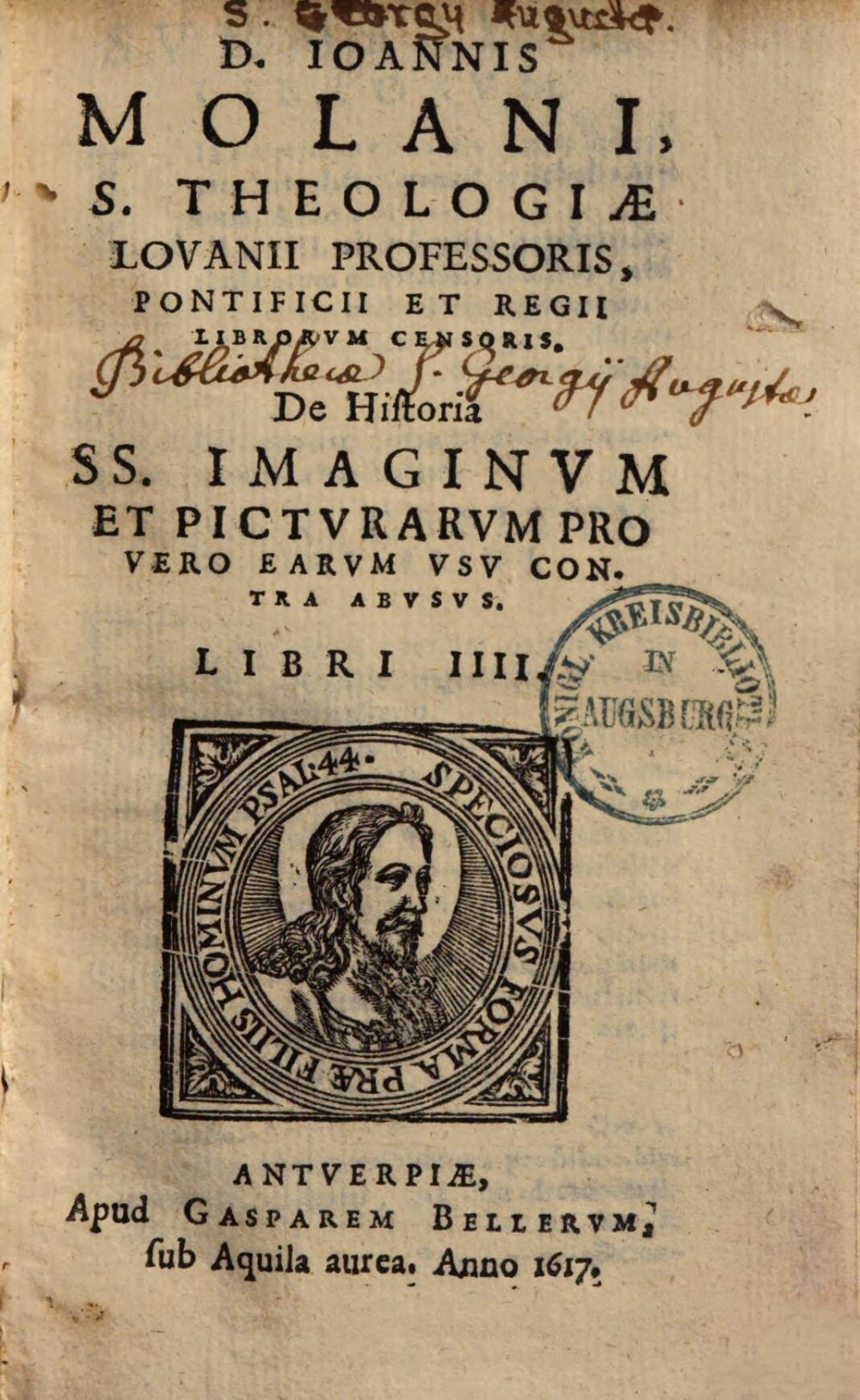
Augsburg, Staats- und Stadtbibliothek — Th H 1475. Digital Reproduction: München, Bayerische Staatsbibliothek, 2015.
Molanus refers to Epiphanius for the correct depiction of the Virgin Mary: as a humble and graceful woman.
“Regarding the Virgin, Mother of God, Nicephorus Callistus depicts her as follows: ‘Her manner of standing and the type of her features and height were as follows, as Epiphanius says: < She was in all things honest and solemn, spoke very little and only of what was useful, available to listen and very gentle, showed respect and consideration for everyone, of average height, although there are those who say that she was a little above average. She showed towards men freedom of speech full of discretion, without bursts of laughter, without disorder and especially without inclination to anger. Her tone was reminiscent of wheat, her hair was blond, her eyes were penetrating with rather light oil-coloured eyes, her eyebrows were black and discreetly arched, her nose was long, her lips were full and her speech was soft, her face was neither round nor pointed, but a little elongated, her hands and fingers were slender. She was devoid of all coquetry, simple, and showed as little of her face as possible. She cultivated an incomprehensible humility, wearing with modesty clothes of her own making and of simple colours; which also showed the holy cover of her head. To say it in few words, her whole person was divinely imbued with much grace.>'”
“De deipara vero Virgine sic scribit Nicephorus Callistus: ‘Mores autem, formaeque et staturae eius modus talis, ut inquit Epiphanius: <fuit, erat in rebus omnibus honesta et gravis, pauca a modum eaque necessaria loquens, ad audiendum facilis et perquam affabilis, honorem suum et venerationem omnibus exhibens statura mediocri, quamuis sint qui eam aliquatulum mediocrem longitudinem excessisse dicant. Decenti dicendi libertate adversus homines usa est, sine risu, sine perturbatione et sine iracundia maxime. Colore fuit frumentum referente, capollo flavo, oculis acribus, sub flavas et tantquam oleae colore pupillas in eis habens. Supercilia ei erant inflexa decenter nigra, nasus longior, labia florida et verborum suavitate plena, facies non rotunda et cauta sed aliquanto longior manus simul et digiti longiores, erat denique, status omnis expers, simplex minimeque vultum fingens nihil molliciei secum trahens, sed humilitatem praecelentem clens; vestimentis quae ipsa gestavit, coloris nativi contenta fuit; id quod etiam num sanctum Capitis eius velamen ostendit. Et paucis dicam, in rebus eius onibus multa divinitus inerat gratia.>'”
Callistus, Nicephorus, Sermo de vita SS Deiparae.
Molanus 1996, 287-288.



